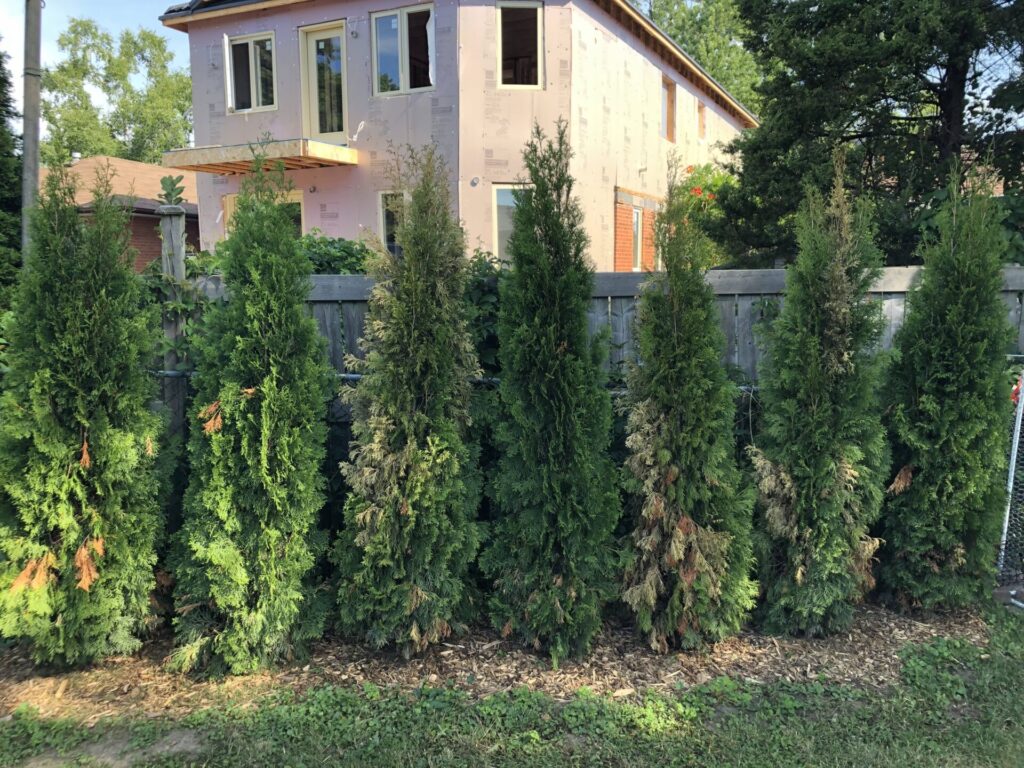
Hi, I know there are lots of articles on this but I would like your opinion on whether I should return these or not and likelihood of recovering (no warrany-Lowes-so I need to return now). I planted in April, I am in Scarborough. 3 out of 7 are yellowing – the very brown twigs are just from bending during travelling. They are in full sun, mix of clay/sand soil, rootballs were not wrapped in burlap, I mixed in some compost and bonemeal when planted, mulch on top, and then fertilized. I think the problem might have been not enough water (started turning yellow last week after the 7+days of 35 degree heat) or fertilize. Just want to know your opinion whether I should take out now or not as now is the only time I can get a refund. Thank you!
Thanks for contacting the Toronto Master Gardeners.
It is possible that the way the cedars were originally planted, and the recent extended heat have something to do with the current situation. You asked for an opinion. Lowes may or may not be willing to provide a refund given a lack of water may account for the problem. There are a few things you can consider doing now to save the unaffected trees and rehabilitate the ones with brown patches. Most importantly right now is water.
- Watering as described below.
- Cut out the brown section on the third to the right and the top of the second to the right and any other brown patches.
- Ensure mulch is not touching the trunk.
- Do not fertilize until the trees have stabilized.
- The trees are fairly close together and may fill in over time to close any gaps created by pruning out the damaged sections.
A few tips on planting cedars for consideration. You can compare these to how you planted yours and diagnose any other potential causes of the browning.
- When planting make sure you do not put the tree too deep.
- At the base of the trunk where the roots start to flare is the depth it should be at. None of the trunk above the roots should be below the soil.
- You should not amend the soil you put back into the hole, you should only fill the hole with local soil. If the hole is richer than the surrounding soil the roots will stay in the hole rather than growing out and anchoring the tree.
- Before you plant loosen up the roots and knock off loose soil. Make sure there are no roots going around in a circle- these can grow and strangle your tree. Fan out the roots out as much as possible
- Mulch around the tree with a donut of mulch. No mulch should be touching the trunk. This will help retain moisture, inhibit weeds, and start to loosen the ground below.
- Monitor the soil around your tree for moisture, water when dry. It is better to water less often and more deeply. An easy way to do this is to put the hose on a trickle at the base of each tree for about 15 minutes each.
- Continue to water right up to freezing in the fall.
Best of luck to you in rehabilitating your hedge, one way or the other. You may be interested in reading further information on dying and browning emerald cedars at this link on the Toronto Master Gardeners website.

